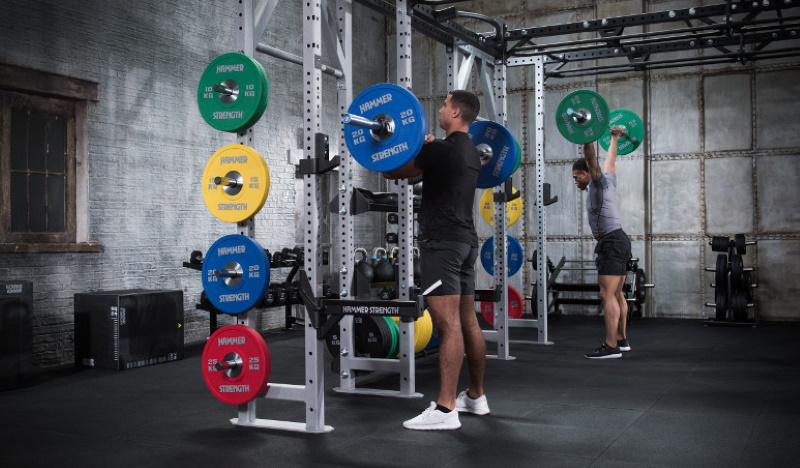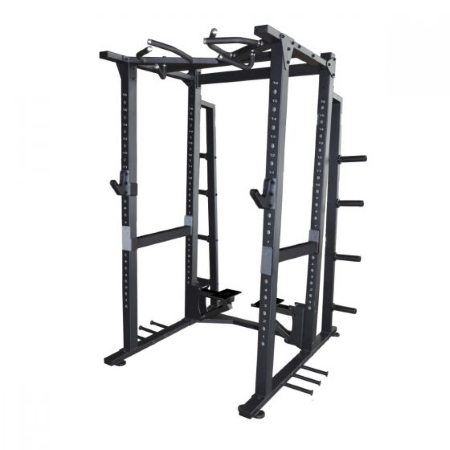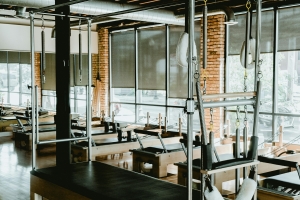Squat Racks, Half Racks & Power Racks Explained

Every gym deserves a good squat rack, and for strength work like squats and barbell exercises, it's pretty much essential. But do you choose a power rack or a squat rack? Can you decide between a half rack and a full rack?
Squat Racks
In short, a rack that holds your barbell ready for you to perform squat exercises, safe in the knowledge that you have support and safety options with the uprights and the perpendicular "spotter arms" (if your rack comes with them). In essence, a squat rack is made up of two uprights, with a "J-hook" style bar holder on each side. This is usually adjustable up and down the upright to ensure you can put the bar at the height that is comfortable for you to start your exercise from.
+ Exigo Wall Mounted Folding Squat Rack
Half Racks
 Probably the most popular rack for the home gym, your half rack is called so due to it not being a squat rack and not being a cage with 4 uprights. Also called a half power rack or half squat rack, you have 4 uprights quite close together, with overhead connection. The two rear uprights provide a great place to have weight horns for storing plates, but in essence, they are there for stability.
Probably the most popular rack for the home gym, your half rack is called so due to it not being a squat rack and not being a cage with 4 uprights. Also called a half power rack or half squat rack, you have 4 uprights quite close together, with overhead connection. The two rear uprights provide a great place to have weight horns for storing plates, but in essence, they are there for stability.
You use the front uprights for bar work, and whilst most now come with the safety arms that can help catch the bar should you slip or fail to complete your squat or exercise. You usually work facing the back of the rack, so that if you fall forward, you can spot the J-Hooks or Safety arms.
Half racks increasingly include the pull-up bars.
+ Hammer Strength HD Elite Half Rack
Power Rack
 The cage - hugely popular and great if you have the space. A power rack can be used in various ways, but usually the main focus is for squats and then either bench press or incline shoulder press using an incline bench.
The cage - hugely popular and great if you have the space. A power rack can be used in various ways, but usually the main focus is for squats and then either bench press or incline shoulder press using an incline bench.
Between the uprights of the power cage (or power rack), you will get the safety bars. These can be set at different heights and are there to take the weight of your bar and weights, should you have an accident or slip. Safety bars should be adjusted to any height, but just slightly below the bottom of your range of motion of exercise.
The cage shape of the rack allows you to perform bar work, but also bench work. Look for numbered holes up and down the uprights - as these are the best way to quickly and easily adjust to your needs when exercising.
You should also get a pair of J-Hooks for the front of the uprights (or inside the cage), which allow you to easily lift the barbell.
Frequently Asked Questions
Often relating to height or weight or whether you need to attach to the floor, we've included a number of top questions below :
What Width Are They?
Usually set up to take 7 foot Olympic bars, this means the width from outside of one upright to the other upright outside ranges between 119 cm and 123 cm. Giving you a couple of inches of leeway with a standard Olympic 7ft bar.
Can I Use My Bench Inside the Rack?
Usually yes - especially if it's a bench from the same brand and range. We suggest you get a bench that has inbuilt wheels for easy movement, though.
Which Attachments?
Depending on which rack you buy, accessories sometimes come with it. Attachments like landmine, dip bars, pegs and resistance band anchors are usually available.





